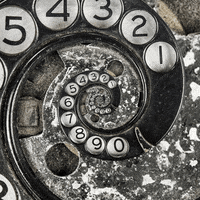OddManOut
Inspired
I've been thinking for some years now that the FAS modelers would benefit from having a bit of HW memory dedicated to 'patch notes' that would appear on the front panel display and on AxeEdit. For the 5150 model, a pop-up note about the presence control would address the desires of both camps. Those that have experience with the physical amp could readily recognize that the presence control on the model should be different from the physical amp. Adding a few representative mappings might be extra helpful: e.g. physical @ 3pm = model @ 3/10, etc. Those with no experience with the physical amp, would be aware of the difference, maybe not care, but would be happy to know that they have better control of presence than they would have with the physical amp. No need for wiki diving.
Is it more work for Cliff and company to implement 'patch notes' on all patches than to choose a particular taper? Yes, of course. Though the immediacy of having an explanation at the point of use, would be super helpful. IMO, there are many patches where if a few helpful design decisions were conveyed, it would go a long way in helping us users understand our models. Do I think having patch notes embedded in each patch (well, each patch that needed to have design decisions or other notes communicated) would stop questions about the patch notes on this forum? No, of course not!
Is it more work for Cliff and company to implement 'patch notes' on all patches than to choose a particular taper? Yes, of course. Though the immediacy of having an explanation at the point of use, would be super helpful. IMO, there are many patches where if a few helpful design decisions were conveyed, it would go a long way in helping us users understand our models. Do I think having patch notes embedded in each patch (well, each patch that needed to have design decisions or other notes communicated) would stop questions about the patch notes on this forum? No, of course not!







